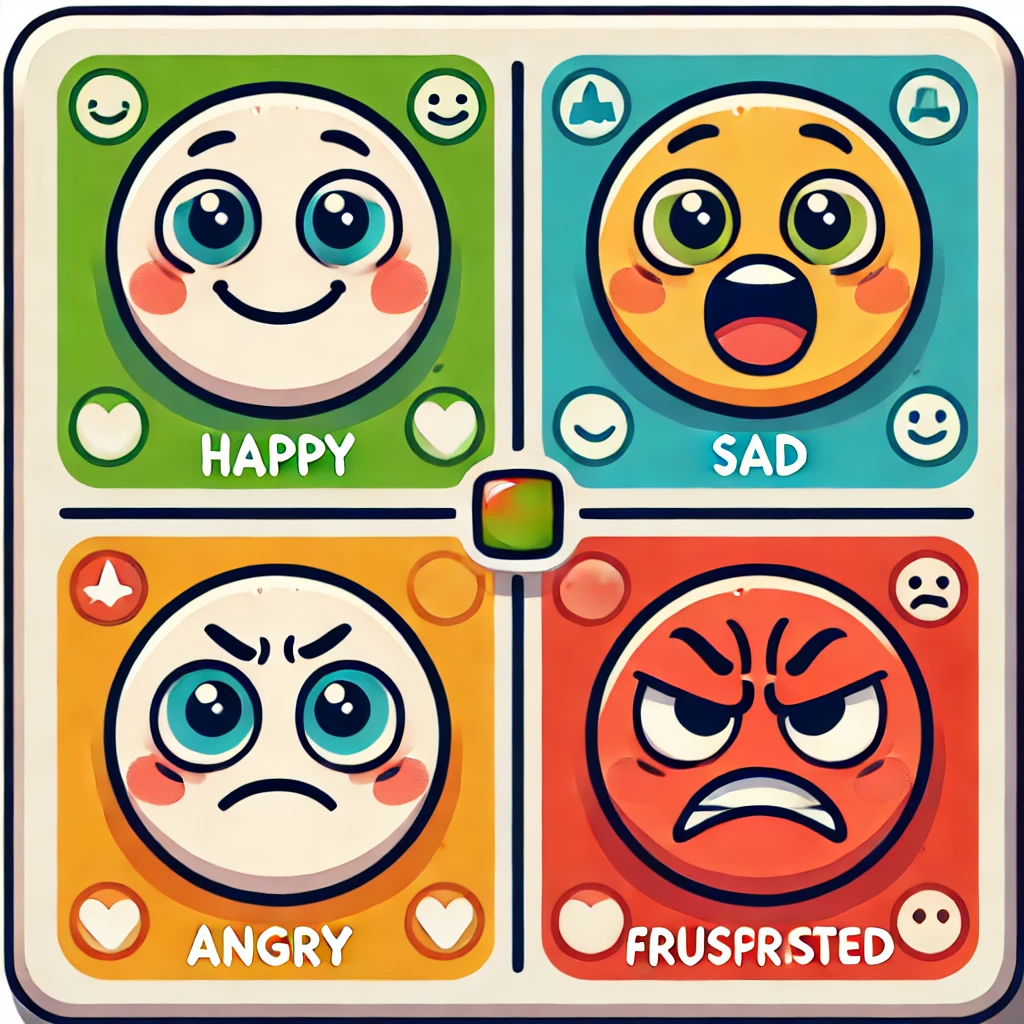Introducing Emotional Intelligence: Teaching Kids to Recognize and Express Their Feelings
Emotional intelligence (EI), or emotional quotient (EQ), is the ability to recognize, understand, and manage our emotions and the emotions of others. For children, developing emotional intelligence is crucial for personal growth, social relationships, and overall mental well-being. By helping kids identify and express their feelings, parents and caregivers set the foundation for healthy emotional development that can positively influence their academic performance, relationships, and even their future careers.
In this post, we’ll explore the importance of emotional intelligence for kids and share practical activities to nurture it at home.
What is Emotional Intelligence?
Emotional intelligence encompasses five key areas:
- Self-awareness – Recognizing and understanding one’s own emotions.
- Self-regulation – Managing emotions in healthy ways.
- Motivation – Using emotions to drive behavior toward goals.
- Empathy – Understanding and recognizing emotions in others.
- Social skills – Navigating social situations and building relationships.
For children, emotional intelligence is more than just a tool for personal growth. It helps them handle challenges, resolve conflicts, and thrive in both social and academic settings. Research shows that children with high EI tend to have better relationships, higher self-esteem, and are more resilient when faced with challenges (Source: American Psychological Association).
Why is Emotional Intelligence Important for Kids?
Teaching kids emotional intelligence offers numerous benefits, including:
- Improved Social Skills: Kids who are emotionally intelligent are better at understanding and responding to the emotions of others, which enhances their ability to communicate and form friendships.
- Better Stress Management: Children with strong EI are more adept at managing stress, frustrations, and anxieties, which can lead to better mental health outcomes.
- Increased Empathy: Emotional intelligence fosters empathy, enabling kids to put themselves in others’ shoes, which is vital for developing kindness, compassion, and conflict-resolution skills.
- Enhanced Academic Success: Emotionally intelligent children are better able to focus, motivate themselves, and persevere through challenges in the classroom.
Activities to Build Emotional Intelligence in Kids
Building emotional intelligence in children is a gradual process that involves teaching them how to recognize and express their feelings. Here are some engaging activities you can use to cultivate EI in your child:
1. Mood Charts
Mood charts are a simple and visual way to help children recognize their emotions. Create a chart with faces depicting various feelings (happy, sad, angry, frustrated, etc.), and encourage your child to identify how they’re feeling each day. This activity can help kids become more self-aware and articulate about their emotions.
How to Make It Fun:
- Use stickers or color-coded markers to track their moods.
- Have a “Mood of the Day” discussion where your child shares why they feel a certain way.
- Review the chart at the end of the week and reflect on how emotions shifted.
2. Journaling for Emotional Expression
Encourage your child to keep an emotion journal where they can draw or write about their feelings. This practice not only helps them process their emotions but also gives them a safe space to explore difficult emotions. Journaling can promote self-regulation by allowing children to reflect on their day and think through how to deal with their feelings constructively.
How to Make It Fun:
- Provide colorful pens, stickers, and a variety of art supplies to make journaling more engaging.
- For younger kids, let them dictate their feelings to you if they are not yet writing independently.
- Create prompts like “What made you happy today?” or “What was the hardest part of your day?” to guide their thoughts.
3. Feelings Charades
Charades is a fun and interactive game that can help children learn to recognize and express emotions. To play feelings charades, take turns acting out different emotions without using words. The other players have to guess what emotion is being portrayed.
How to Make It Fun:
- Use emotion flashcards or a feelings wheel to give children ideas for different emotions to act out.
- Make the game silly by adding exaggerated expressions, making it easier for younger kids to participate.
- After guessing the emotion, have a short conversation about a time when they might have felt that way.
4. Sharing Circles
A sharing circle is a great way to practice emotional expression in a group setting. This activity allows kids to openly talk about their feelings with others. This is especially useful for families, classrooms, or playgroups, where children can share their emotions and listen to their peers in a supportive environment.
How to Make It Fun:
- Pass around a “talking object” (like a soft ball or stuffed animal) to make the process feel more structured.
- Encourage children to take turns sharing, while others listen without interrupting.
- Discuss ways to support each other when someone is feeling a specific emotion.
5. Emotion-Based Storytelling
Storytelling is a wonderful way to help children process emotions. Read stories that showcase characters dealing with a range of emotions, such as happiness, fear, jealousy, or excitement. Ask your child to identify what emotions the characters are experiencing and discuss how the character manages or expresses those feelings.
How to Make It Fun:
- Choose books that are rich in emotions, like The Color Monster by Anna Llenas or The Feelings Book by Todd Parr.
- Create your own stories with your child, where characters face different emotional challenges and work through them.
- After reading, talk about how the characters’ feelings are similar or different from your child’s own.
The Role of Parents in Emotional Intelligence Development
Parents play a crucial role in helping children build emotional intelligence. By modeling emotional awareness and providing opportunities for practice, you can help your child develop the tools they need to navigate their emotions effectively. Here are some strategies:
- Be a Role Model: Show your child how to express emotions calmly and thoughtfully. Your behavior is one of the most important ways kids learn.
- Validate Their Feelings: Acknowledge your child’s emotions, even if they seem small or silly. When kids feel understood, they’re more likely to share their feelings openly.
- Foster a Supportive Environment: Provide a safe space where your child can express themselves without fear of judgment. This encourages emotional openness and honesty.
Final Thoughts
Emotional intelligence is a vital skill that will serve your child throughout their life. By teaching them how to recognize and express their feelings through fun, engaging activities, you help them build a solid foundation for managing their emotions, building relationships, and becoming resilient individuals. Start small, be consistent, and remember to create a space where feelings are always valid and respected. With your guidance, your child will grow up emotionally intelligent and well-equipped to handle life’s ups and downs.



